First, the theme song of the overtired jet-lagged jazz blogger:
Having offered that, I proceed to the reason for the joyous exhaustion: my visit (with video camera and notebook) to the 2013 Whitley Bay Classic Jazz Party. To tell all the tale would tax my five wits, but the music — small concerts in the main ballroom, plus rehearsals and jam sessions in the Victory Pub — was engrossing. As I write this, more than three hundred videos are up-or-downloading. And many of them will be shared with what I know is a fervent audience.
Speaking of that audience, I met a number of most grateful and devoted JAZZ LIVES readers in person, always a very heartwarming experience. I said to more than one person, “It means so much to me to know that real people are out there, that I am spending hours in front of the computer so that _____ can see and enjoy this performance.” Thank you all, those people I’ve met and those yet to be encountered.
I’ve been attending the banquets of music put on at the Village Newcastle in England since 2009 — first, the Whitley Bay International Jazz Festival, now the Classic Jazz Party — and they have always delighted and enlightened. They continue to reflect the spirit of their departed founder, Mike Durham, who felt that if the music was not presented in its historical context, then that history would be lost. So these weekends have always offered us something more elaborate than six people on the stand having a good time playing the blues or a ballad medley: mini-concerts that are often highly educational although never tedious.
On paper, it might look as if one had wandered into a living jazz museum — the Hot Tate, for instance. But since “museum” has immediate associations of antiquity, with the treasures safely packed away, visible but out of reach, I think the Classic Jazz Party is more properly compared to a wondrously shape-changing repertory company. One hour, Matthias Seuffert is Johnny Dodds; another, he has reappeared as Coleman Hawkins, then Lester Young, which is the jazz equivalent of seeing Olivier one night as Iago, then next as Stanley Kowalski, a third as Everyman.
This year, there was a lively hour of Jelly Roll Morton, a swinging evocation of the early Basie band, two sessions of Ellington (Twenties, then late Thirties), a lovely reincarnation of the Coon-Sanders Nighthawks — where else would such a thing happen? — an hour with the 1929-31 Luis Russell band. There were also more informal tributes to Mildred Bailey, Lee Wiley, Coleman Hawkins, Stuff Smith and Eddie South, Bix Beiderbecke, Eddie Condon and the Chicagoans, Harry Reser, Ray Noble and Al Bowlly, Jabbo Smith, Fats Waller and his Rhythm, Bessie Smith, Johnny Dodds’ Black Bottom Stompers, Tiny Parham, the California Ramblers, Clarence Williams Jazz Kings, King Oliver in New York, British dance bands, the Jimmie Noone Apex Club Orchestra, and more . . . torch songs and cheerful songs from the Great Depression, solo piano recitals, two outings for Jeff and Anne Barnhart’s Ivory and Gold, and more. The program lists thirty-eight separate sessions, including the nocturnal happenings in the Victory Pub, which (I am told) continued well past 2:30 AM.
The players and singers were:
Bent Persson, Duke Heitger, Andy Schumm, Ben Cummings, Andy Woon, Torstein Kubban, Kristoffer Kompen, Alistair Allan, Graham Hughes, Aurélie Tropez, Stéphane Gillot, Jean-Francois Bonnel, Claus Jacobi, Matthias Seuffert, Lars Frank, Frans Sjostrom, Keith Nichols, Jeff Barnhart, Morten Gunnar Larsen, Martin Seck, Spats Langham, Henry Lemaire, Jacob Ullberger, Roly Veitch, Richard Pite, Henry Lemaire, Malcolm Sked, Phil Rutherford, Jean-Philippe Palma, Josh Duffee, Julien Richard, Nick Ward, Emma Fisk, Daryl Sherman, Cecile McLorin Salvant.
I won’t single out individual performers — that would take more energy than I have at the moment — but the music ranged from excellent to enthralling.
Thanks to all the musicians, to Mike Durham, to Patti Durham, to Julio and Jonathan, and to pals Bob and Bobbie, Ron and Ellen, Peter and his saxophone, to Michel Bastide, to Emrah and Pascal,to Norman Field, to Mary B. and John Carstairs Hallam . . . and more.
And — not incidentally — here are the last notes I heard on Sunday-night-into-Monday-morning before I went to bed. The jam session at the Victory Pub continued, but here’s KING PORTER STOMP — featuring Morten Gunnar Larssen at the portable keyboard; Andy Schumm on C-melody saxophone; Torstein Kubban on cornet; Kristoffer Kompen on trombone; Jacob Ullberger on banjo; Nick Ward on drums; Claus Jacobi on Frans Sjostrom’s beloved bass saxophone:
Stomp, indeed. More to come.
And “more to come” is a serious thing. Amid general rejoicing, it was announced that the 2014 Whitley Bay Classic Jazz Party will be held, beginning Friday, November 7, 2014. As Harry Barris wrote, IT MUST BE TRUE.
May your happiness increase!







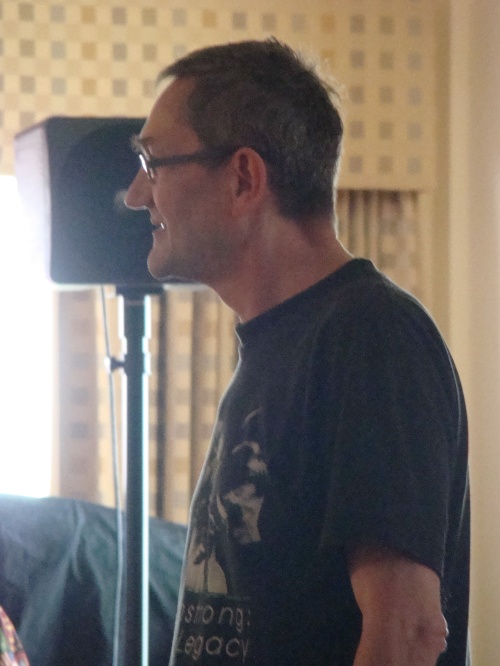
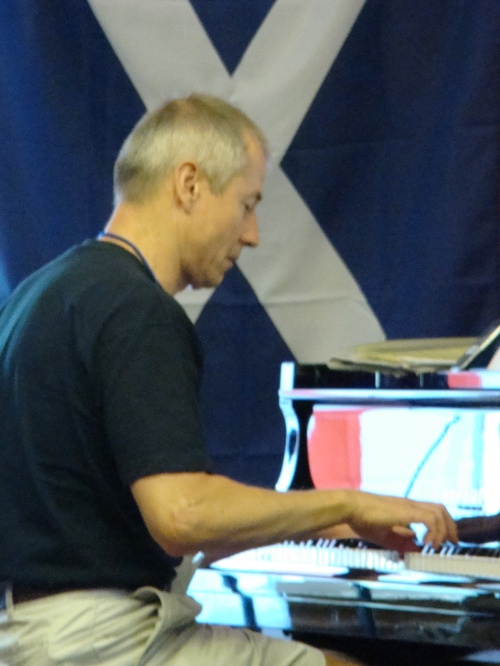

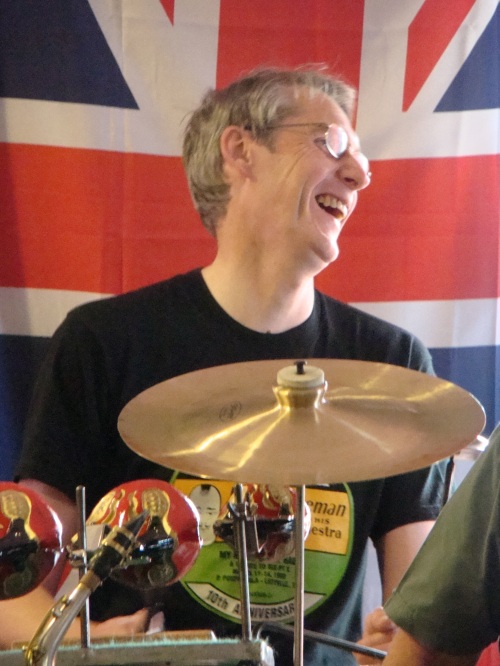
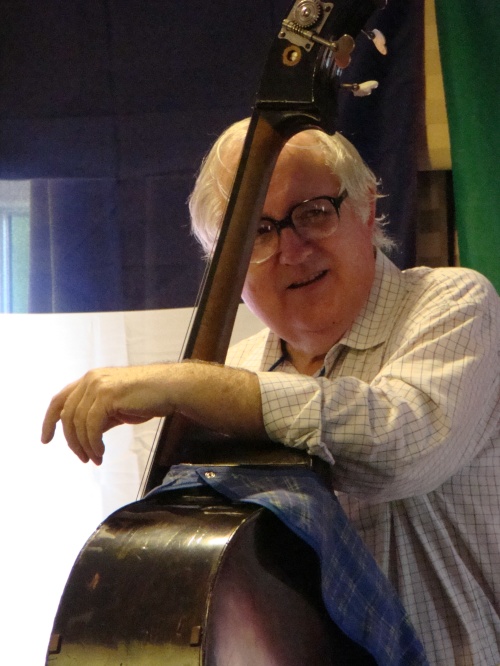
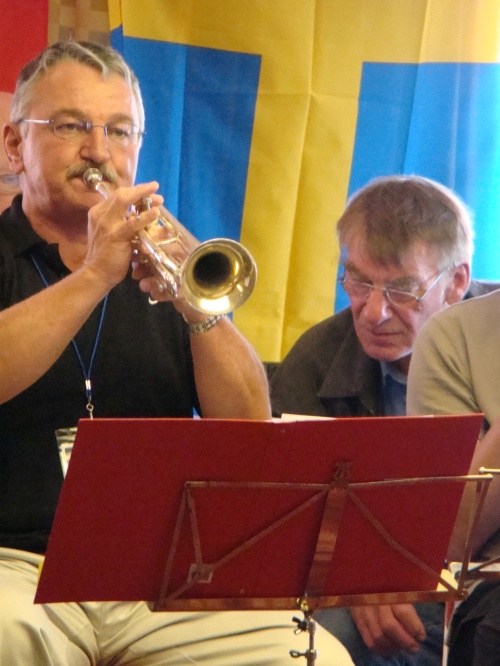
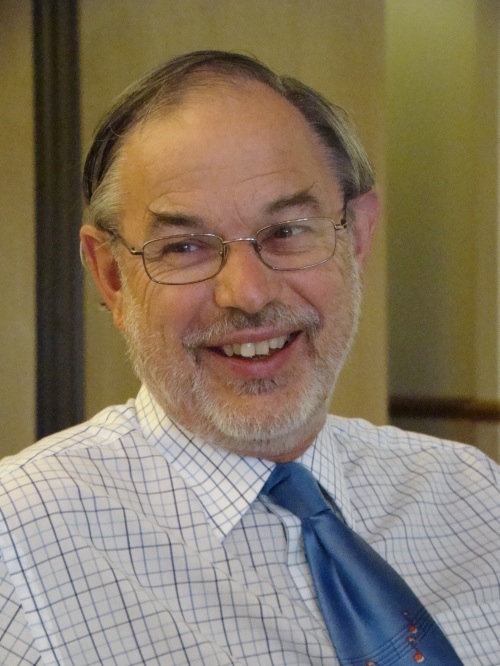
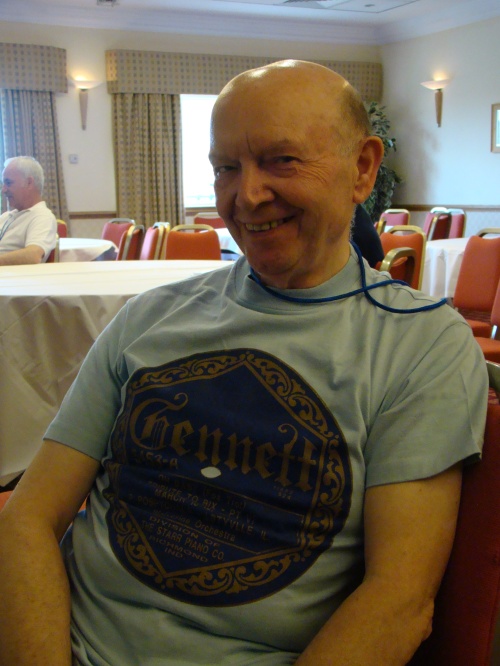
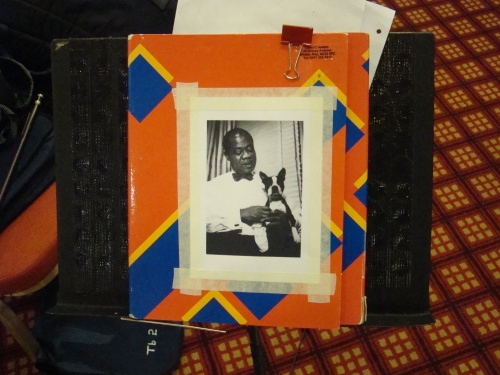

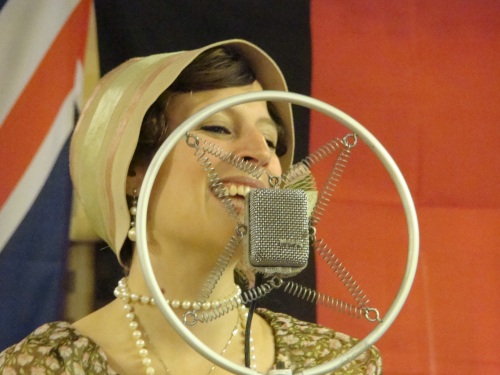
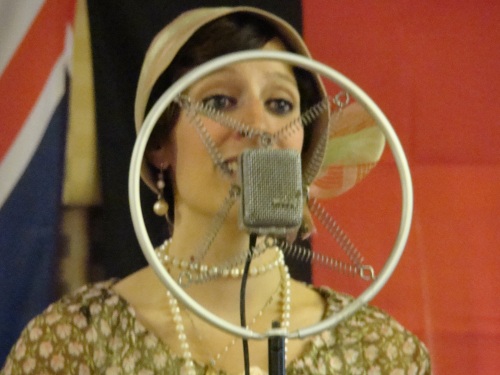


 The first is CHASING SHADOWS, by “Spats and his Rhythm Boys.” (WVR 1005) “Spats,” of course, is singer / plectrist Spats Langham, who’s appeared on this site in a video clip. On this disc, he’s accompanied by trumpeter Mike Durham, trombonist Paul Munnery, reed wizard Norman Field, Keith Nichols on piano and accordion, John Carstairs Hallam, string bass, Frans Sjostrom, bass sax, Nick Ward, drums, and Mike Piggott, violin. The sessions were recorded in November 2008, and a glance at the tune listing will tell all: Spats and friends are thoroughly steeped in the “hot jazz with vocal refrain” of the late Twenties, extended forward into the late Thirties (from Cliff Edwards and Bing Crosby to Jimmy Rushing and Putney Dandridge): CRAZY WORDS, CRAZY TUNE / CHASING SHADOWS / I’M IN THE SEVENTH HEAVEN / CAN’T WE BE FRIENDS / HANG ON TO ME / ME AND THE MOON / ACCORDION JOE / SOMEDAY SWEETHEART / BROWN BOTTLE BLUES / WHAT DO I CARE WHAT SOMEBODY SAID? / HALFWAY TO HEAVEN / SMILIN’ SAM / OH, IT LOOKS LIKE RAIN / HIAWATHA’S LULLABY / YOU DO THE DARNEDEST THINGS, BABY / SWING BRIDGE STOMP.
The first is CHASING SHADOWS, by “Spats and his Rhythm Boys.” (WVR 1005) “Spats,” of course, is singer / plectrist Spats Langham, who’s appeared on this site in a video clip. On this disc, he’s accompanied by trumpeter Mike Durham, trombonist Paul Munnery, reed wizard Norman Field, Keith Nichols on piano and accordion, John Carstairs Hallam, string bass, Frans Sjostrom, bass sax, Nick Ward, drums, and Mike Piggott, violin. The sessions were recorded in November 2008, and a glance at the tune listing will tell all: Spats and friends are thoroughly steeped in the “hot jazz with vocal refrain” of the late Twenties, extended forward into the late Thirties (from Cliff Edwards and Bing Crosby to Jimmy Rushing and Putney Dandridge): CRAZY WORDS, CRAZY TUNE / CHASING SHADOWS / I’M IN THE SEVENTH HEAVEN / CAN’T WE BE FRIENDS / HANG ON TO ME / ME AND THE MOON / ACCORDION JOE / SOMEDAY SWEETHEART / BROWN BOTTLE BLUES / WHAT DO I CARE WHAT SOMEBODY SAID? / HALFWAY TO HEAVEN / SMILIN’ SAM / OH, IT LOOKS LIKE RAIN / HIAWATHA’S LULLABY / YOU DO THE DARNEDEST THINGS, BABY / SWING BRIDGE STOMP. I’ve been listening to pianist Ray Skjelbred and drummer Hal Smith for some time in a variety of settings — Ray, playing Frank Melrose songs or cowboy ballads, Hal, rocking every band he’s ever been with. Ray’s new CD, GREETINGS FROM CHICAGO (Jazzology Records, recorded August 2008), is a real winner, featuring delectable hot jazz from Ray, Hal, clarinetist Kim Cusack, guitarist Katie Cavera, and Clint Baker on a variety of songs, familiar and rare, each one with deep associations: OH, BABY (DON’T SAY NO, SAY “MAYBE”) / SUGAR / MY GALVESTON GAL / IT’S BEEN SO LONG / I LOST MY GAL FROM MEMPHIS / BULL FROG BLUES / THERE’LL BE SOME CHANGES MADE / IDOLIZING / I’LL BET YOU TELL THAT TO ALL THE GIRLS / FRIARS POINT SHUFFLE / DARKTOWN STRUTTERS’ BALL / SINCE MY BEST GAL TURNED ME DOWN / SHANGHAI HONEYMOON / I MUST HAVE THAT MAN / NOBODY’S SWEETHEART NOW / YOU TOOK ADVANTAGE OF ME / UP A LAZY RIVER / SHIM-ME-SHA-WABBLE / AM I BLUE? / LAUGHING AT YOU / RING DEM BELLS. This group knows how, through long playing experience, to approach each song on its own terms — wistful or fiery — and the down-home vocals by each member of the quintet are charming. I have a special fondness for the repertoire of the early Red Allen Vocalions, and my hunger has been satisfied by this band’s versions of MY GALVESTON GAL and I’LL BET YOU TELL THAT TO ALL THE GIRLS. (But it sure sounds good to me!) This one’s available through Jazzology and perhaps other places online: for information, visit
I’ve been listening to pianist Ray Skjelbred and drummer Hal Smith for some time in a variety of settings — Ray, playing Frank Melrose songs or cowboy ballads, Hal, rocking every band he’s ever been with. Ray’s new CD, GREETINGS FROM CHICAGO (Jazzology Records, recorded August 2008), is a real winner, featuring delectable hot jazz from Ray, Hal, clarinetist Kim Cusack, guitarist Katie Cavera, and Clint Baker on a variety of songs, familiar and rare, each one with deep associations: OH, BABY (DON’T SAY NO, SAY “MAYBE”) / SUGAR / MY GALVESTON GAL / IT’S BEEN SO LONG / I LOST MY GAL FROM MEMPHIS / BULL FROG BLUES / THERE’LL BE SOME CHANGES MADE / IDOLIZING / I’LL BET YOU TELL THAT TO ALL THE GIRLS / FRIARS POINT SHUFFLE / DARKTOWN STRUTTERS’ BALL / SINCE MY BEST GAL TURNED ME DOWN / SHANGHAI HONEYMOON / I MUST HAVE THAT MAN / NOBODY’S SWEETHEART NOW / YOU TOOK ADVANTAGE OF ME / UP A LAZY RIVER / SHIM-ME-SHA-WABBLE / AM I BLUE? / LAUGHING AT YOU / RING DEM BELLS. This group knows how, through long playing experience, to approach each song on its own terms — wistful or fiery — and the down-home vocals by each member of the quintet are charming. I have a special fondness for the repertoire of the early Red Allen Vocalions, and my hunger has been satisfied by this band’s versions of MY GALVESTON GAL and I’LL BET YOU TELL THAT TO ALL THE GIRLS. (But it sure sounds good to me!) This one’s available through Jazzology and perhaps other places online: for information, visit  Finally, a sentimental favorite. When I encountered guitarist / singer / multi-instrumentalist John Gill in a club in 2007, he casually told me that he was planning to record a tribute to Bing Crosby, focusing on the dreamy (and often swinging) repertoire of 1931-35. As politely as I could, I beseeched John to let me be part of this project: Crosby is one of my heroes, and that period of Crosbyana is a consistent delight. John, most graciously, invited me to the sessions and I ended up writing the notes for the CD, which was immensely rewarding. The performances on this disc are sweet evocations with a pulsing jazz heart — accompaniment and solos by Jon-Erik Kellso (cornet and trumpet), Jim Fryer (trombone), Matt Munisteri (guitar and banjo), Orange Kellin, Dan Levinson, Marc Phaneuf (reeds), Conal Fowkes (piano), Kevin Dorn (drums), Brian Nalepka (bass and tuba), Andy Stein, Matt Szemela (violins). The songs are beautiful and well-chosen: DID YOU EVER SEE A DREAM WALKING? / HAPPY-GO-LUCKY YOU / A FADED SUMMER LOVE / STAR DUST / I SURRENDER, DEAR / I FOUND A MILLION-DOLLAR BABY / IF I HAD YOU / PENNIES FROM HEAVEN / STREET OF DREAMS / BABY – OH WHERE CAN YOU BE? / SWEET LEILANI – BLUE HAWAII / WRAP YOUR TROUBLES IN DREAMS / MUDDY WATER / I’M THROUGH WITH LOVE / PLEASE / WERE YOU SINCERE? / WHEN THE FOLKS HIGH UP DO THE MEAN LOW-DOWN / RED SAILS IN THE SUNSET / WHERE THE BLUE OF THE NIGHT MEETS THE GOLD OF THE DAY / JUST ONE MORE CHANCE / LEARN TO CROON / OUT OF NOWHERE.
Finally, a sentimental favorite. When I encountered guitarist / singer / multi-instrumentalist John Gill in a club in 2007, he casually told me that he was planning to record a tribute to Bing Crosby, focusing on the dreamy (and often swinging) repertoire of 1931-35. As politely as I could, I beseeched John to let me be part of this project: Crosby is one of my heroes, and that period of Crosbyana is a consistent delight. John, most graciously, invited me to the sessions and I ended up writing the notes for the CD, which was immensely rewarding. The performances on this disc are sweet evocations with a pulsing jazz heart — accompaniment and solos by Jon-Erik Kellso (cornet and trumpet), Jim Fryer (trombone), Matt Munisteri (guitar and banjo), Orange Kellin, Dan Levinson, Marc Phaneuf (reeds), Conal Fowkes (piano), Kevin Dorn (drums), Brian Nalepka (bass and tuba), Andy Stein, Matt Szemela (violins). The songs are beautiful and well-chosen: DID YOU EVER SEE A DREAM WALKING? / HAPPY-GO-LUCKY YOU / A FADED SUMMER LOVE / STAR DUST / I SURRENDER, DEAR / I FOUND A MILLION-DOLLAR BABY / IF I HAD YOU / PENNIES FROM HEAVEN / STREET OF DREAMS / BABY – OH WHERE CAN YOU BE? / SWEET LEILANI – BLUE HAWAII / WRAP YOUR TROUBLES IN DREAMS / MUDDY WATER / I’M THROUGH WITH LOVE / PLEASE / WERE YOU SINCERE? / WHEN THE FOLKS HIGH UP DO THE MEAN LOW-DOWN / RED SAILS IN THE SUNSET / WHERE THE BLUE OF THE NIGHT MEETS THE GOLD OF THE DAY / JUST ONE MORE CHANCE / LEARN TO CROON / OUT OF NOWHERE.